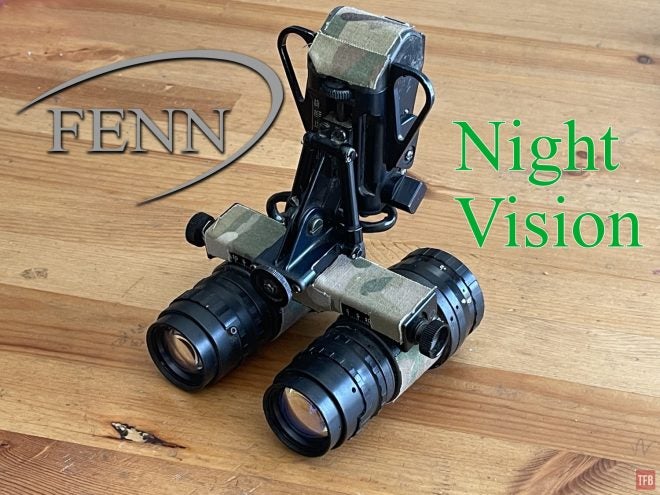Hello fellow nocturnal enthusiasts, and welcome to another Friday Night Lights. Today we take a look at a rather uncommon set of dual tube night vision goggles. Fenn Night Vision makes these ANVIS goggles for pilots. They feature a wider field of view and in some cases can explode right off your face, more about that later. As always this series is sponsored by ATN Corp, manufacturers of night vision and thermal optics like the THOR LT. As with all of our sponsored series, Friday Night Lights will continue to bring you unbiased news and reviews from a variety of companies.
Dual Tube NVGS @TFB:
- Friday Night Lights: Dual Tube Spotlight – RNVG, Sentinels, & ANVS
- Friday Night Lights: Dual Tube Spotlight – AN/PVS-15
- Friday Night Lights: Dual Tube Spotlight – Elbit F5032 SBNVG/PVS-31D
Fenn ANVIS From Across The Pond
Fenn Night Vision is based out of the UK, specifically Farnborough Airport east of London. My friend Cajer is the one who got these rather rare aviation night vision goggles and he lent them to me to check them out and to showcase them here on Friday Night Lights. At first glance, they look sort of like ANVIS6/9 goggles which I wrote about in my article showcasing the RNVG and Sentinel housings. ANVIS goggles are specifically designed for aviation purposes. They are not ruggedized and are designed specifically for flying aircraft at night. The Fenn goggles are a form of aviation goggles.
Fenn Optics
The reason my friend Cajer acquired this set of Fenn Aviation goggles was due to the lenses. These have a wider field of view. Normal night vision like PVS-14s and goggles that use PVS-14 optics have a 40º FOV. The Fenn optics are 47.5º FOV. Not quite 50º FOV like the AGM NVG-50 or FLIR BNVD-51 but these do not have distortion nor do they have tiny ocular lenses.
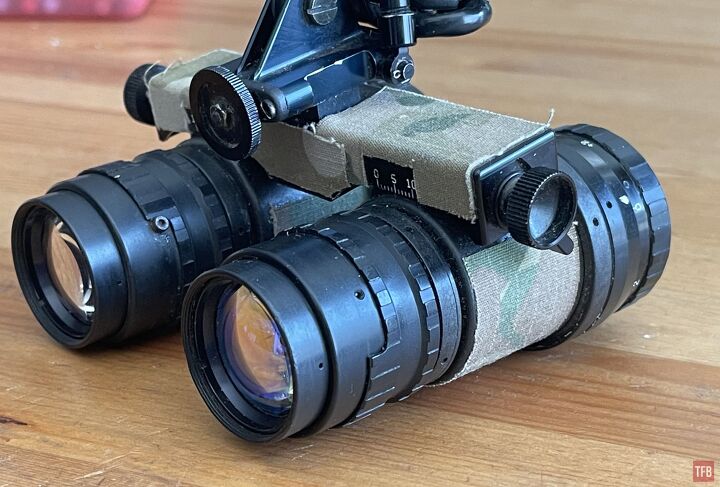

Another added benefit to the Fenn optics is that they are a “faster” lens. They are supposedly f/1.0 compared to typical PVS-14 40º lenses which are f/1.2. They let in more light which equates to a brighter image.
Below is a screencap from a PDF used by Thales about their wider FOV and faster lens which is f/0.95. They claim a 60% increase in light. According to Cajer, his Fenn goggles increase light by 51%.
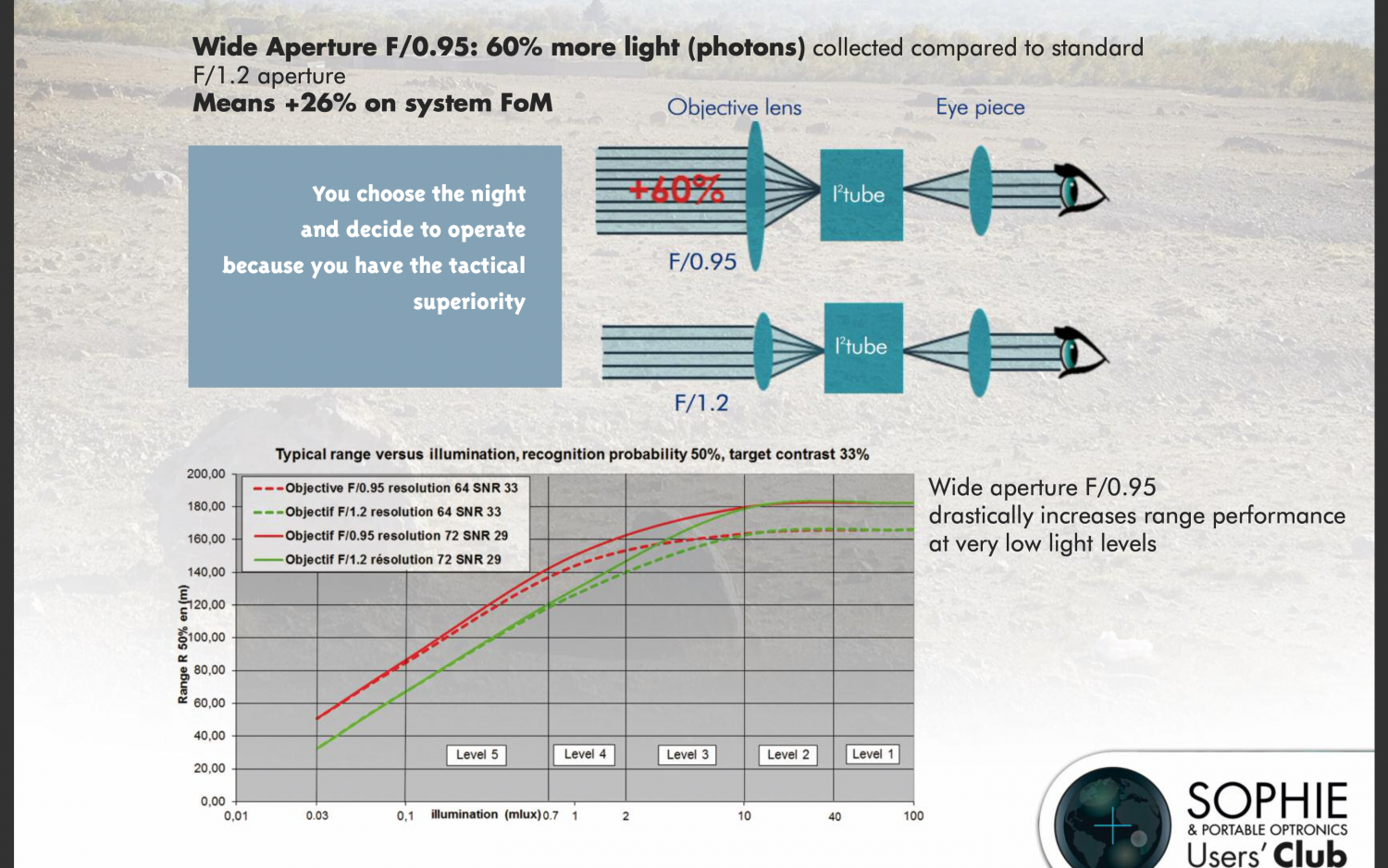
Here is a side by side comparison between lenses.
One thing to note is that the Fenn objective lenses are for aviation purposes so they have coatings to filter out specific wavelengths of light for use in conjunction with filtered cockpit gauges in aircraft. This decreases some of the light entering the Fenn objectives. Since we do not know the specific coatings we do not know the actual amount of light that is reduced. However, I did a side by side comparison using unfilled L3 green phosphor image intensifiers, as seen in the video above, and tested the Fenn lenses against normal US ANVIS objectives and the Fenn optics were clearer and slightly brighter.
There is another downside to the UK lenses, and that is weight, They weigh more than ANVIS lenses.

Fenn eyepiece

PVS-14 eyepiece

Fenn objective. Notice how narrow the rear of the lens is.

ANVIS objective

ANVIS on the left, Fenn on the right. Objective lenses

PVS-14 on the left, Fenn on the right. Occular lens.
Fenn Housing
The Fenn housing is drastically different from standard ANVIS goggles. Normal ANVIS systems use a ball detent system to deliver power to the goggles. This requires a dedicated mount and remote power source. In some cases, there are aftermarket mounts by Wilcox that have battery compartments built into the mounts. Fenn went in a different direction. Their mount is affixed to the bridge and the mount has batteries inside it.

The pivot joint for the night vision goggles looks like the ankle to some anime mecha.
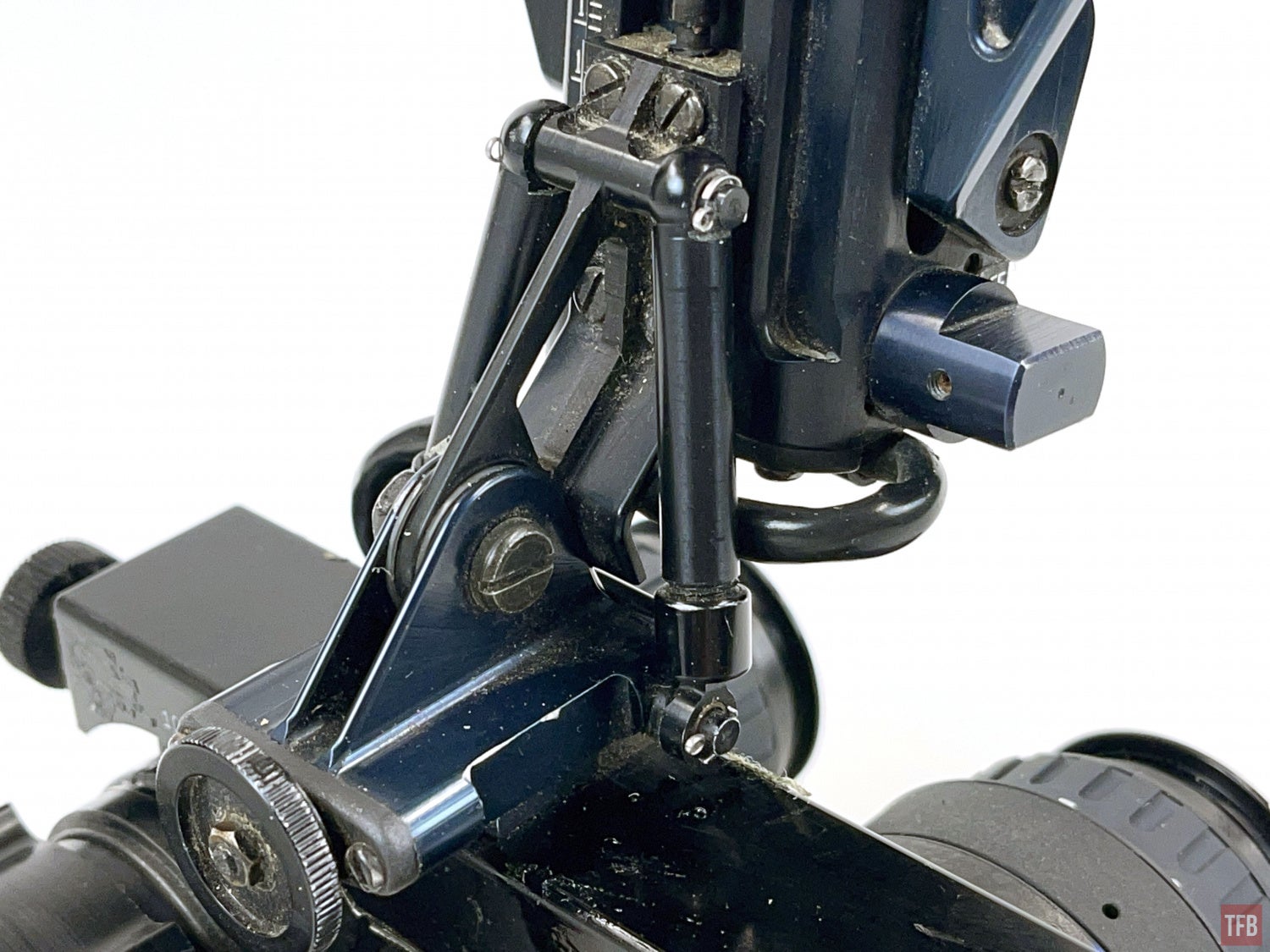

The piston-looking rods are springs to keep tension in the deployed and stored positions.

Normally, ANVIS goggles are powered and activated through a ball detent mount so that when they are stowed upwards, power is shut off. When they are deployed, the electrical circuit is connected and the ANVIS goggles are powered up. With the Fenn goggles that is not the case. It has a power switch built into the side of the mount.

These goggles have the same adjustments that normal ANVIS does. The large knurled wheel at the front is for moving the bridge forwards or backwards.
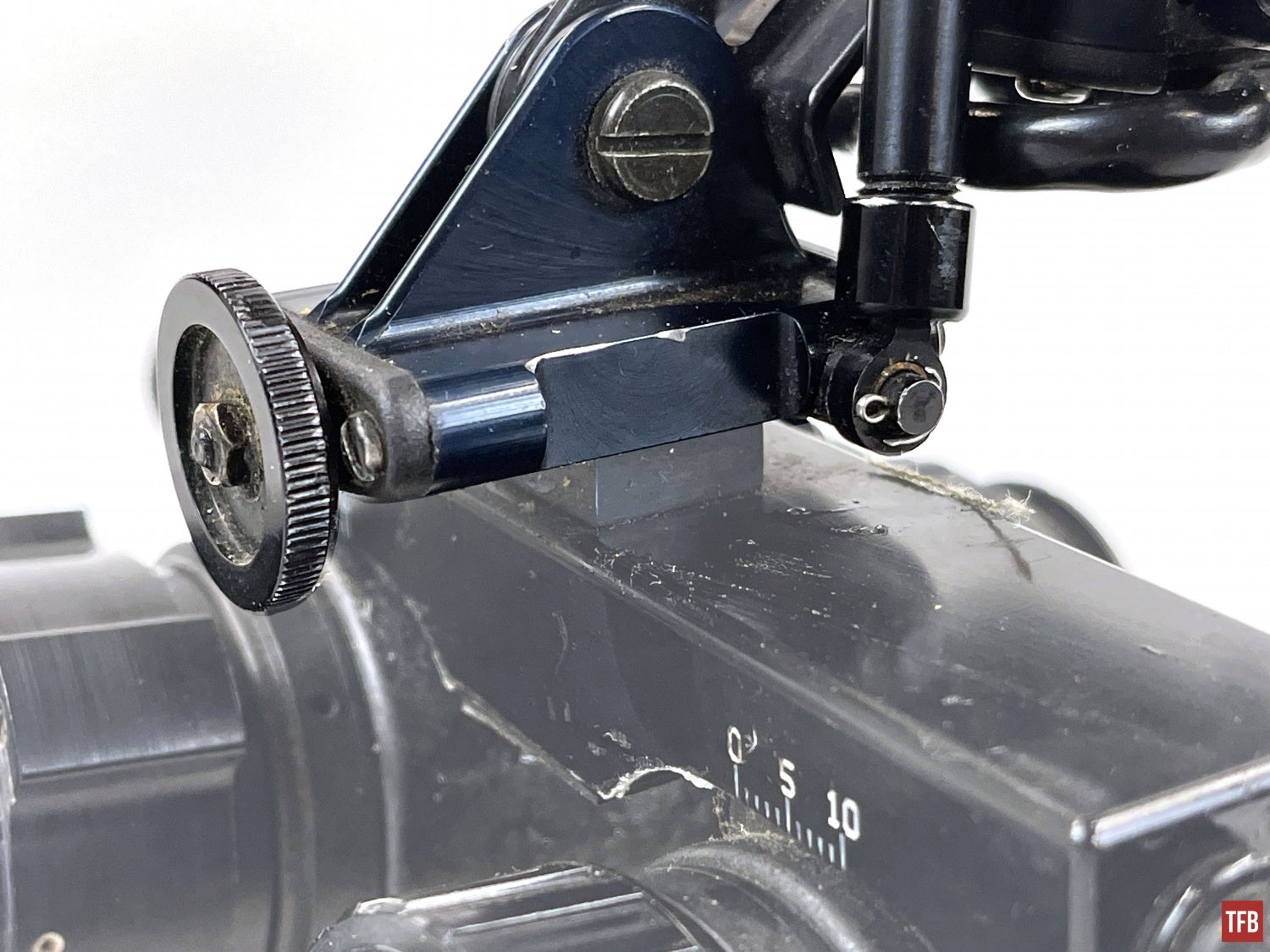
There are knurled knobs on either side to adjust the lateral position of the pods. This is for pupillary distance.
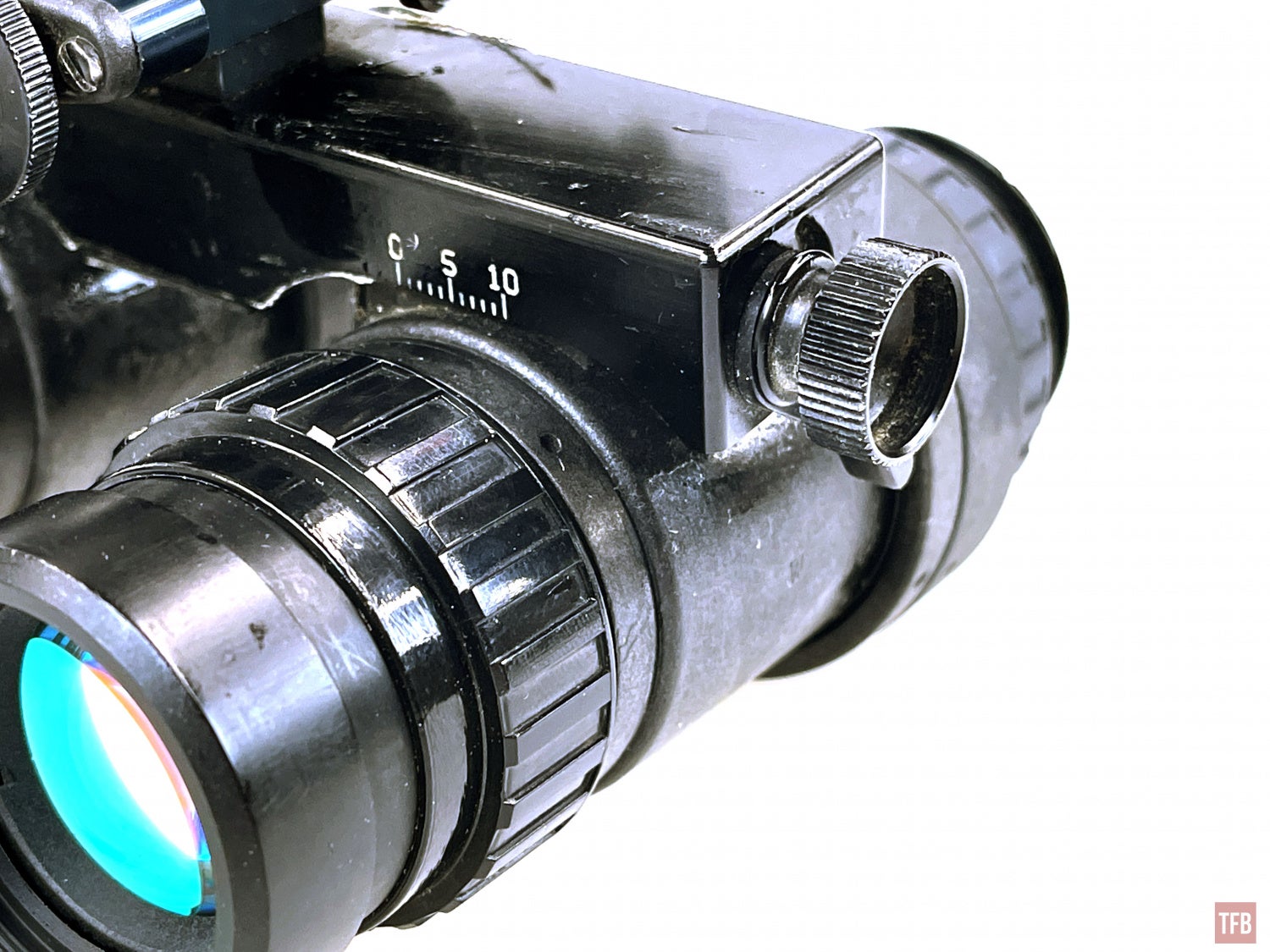
Just like Anvis, there is a small lever that adjusts the tilt of the pods in relation to the bridge and mount
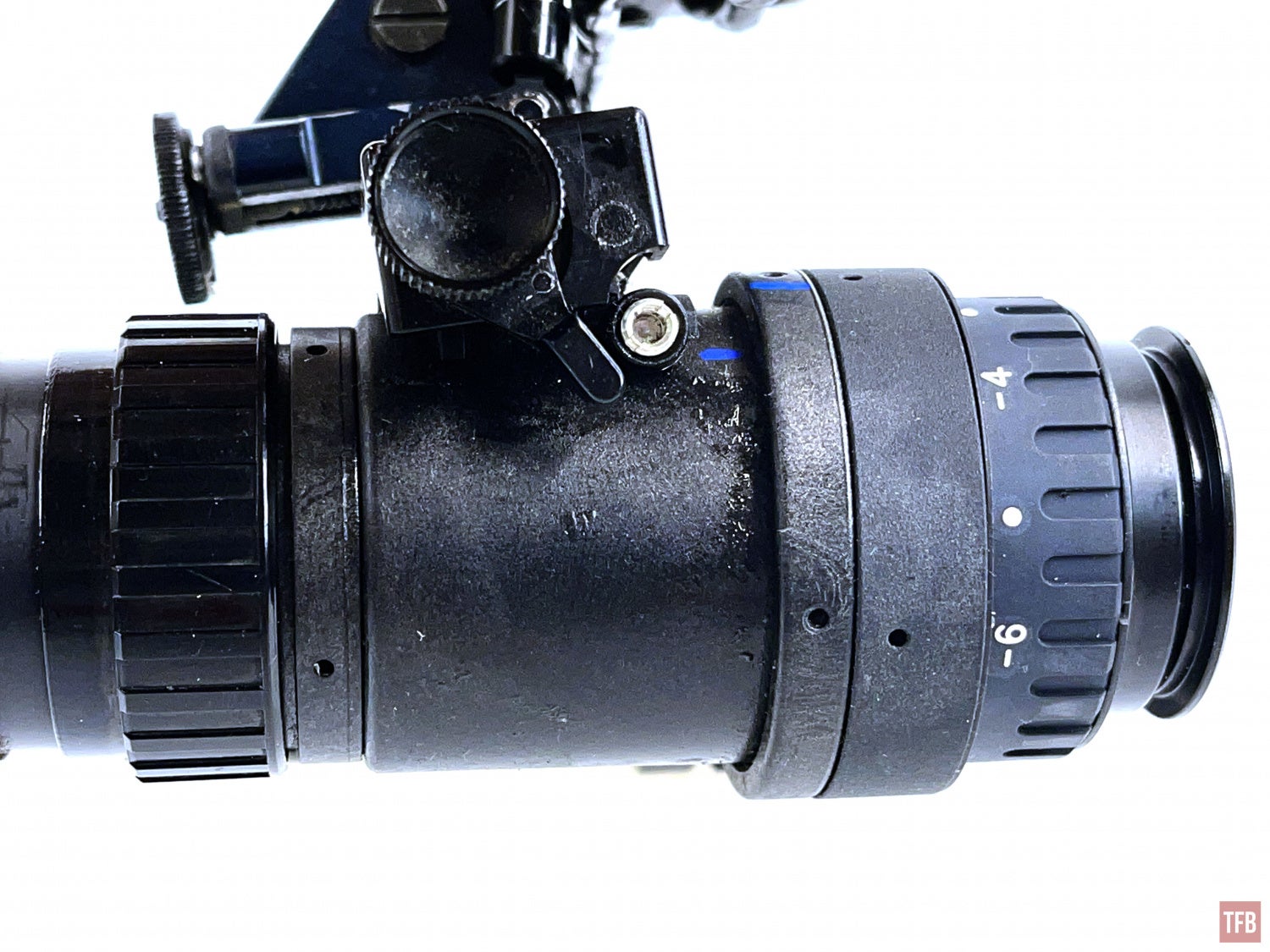
These British aviation nods use a proprietary mounting plate that it quick attaches on. On either side of the mount are these large wings. You pull or push them forwards and that is what releases the mount from the shroud on your helmet.





Much of the Fenn housing is metal. I assume aluminum. The mount, hinge and bridge are all metal. Even without the Fenn optics and using ANVIS glass, the housing is heavier than an ANVIS9. I even included the ball detent and the smallest power supply I have to power the ANVIS mount.


Powering The FENN Goggles
Since these goggles do not use the standard ball detent system, the batteries are stored in the mount itself. It uses two 1/2AA batteries. This is a bit annoying since those are not very commonplace.

Fenn designed these goggles in a very interesting way. It uses 2x 1/2AA batteries for a reason and it is not what you would think. Each tube is independently powered by one of the 1/2AA batteries. This eliminates any issues with power supply problems allegedly in ANVIS systems. ANVIS uses a remote battery pack typically mounted on the back of helmets. In order to route power, there is a cable that reaches forwards while there is a small pigtail coming out of an ANVIS mount. You plug the battery pack cable into the pigtail and now you are playing with power. Fenn claims that this is a single-point failure. With two separate batteries powering each image intensifier, the goggles will never lose complete power. Even if one battery dies or you have some short in one of the pods, the other pod will continue to work.
Fenn NG700D Night Vision Goggles are high-performance devices with excellent light gathering power and a wide field of view, making them well suited for both rotary wing and fixed-wing applications in the most challenging conditions. This device is currently in service with the UK Ministry of Defence and Police Air Support Units.
The system is notable for its high-quality, large aperture objective lens, which offers exceptional performance in low light conditions. This exceptional capability will enhance the operational effectiveness of all types of image intensifier tube technology.
With a 47.5° field of view at 30mm eye relief, these NVGs increase spatial awareness for the operator whilst reducing the need for head movement. Ultimately, safety is improved and operator fatigue is reduced.
In addition, the Fenn NG700 is now DNVG compatible, further increasing operational capability with all the advantages that digital imagery brings.
Fenn Night Vision Goggles have all been designed to eliminate any single point where power could fail. Each image intensifier tube is powered independently by separate batteries and by separate electrical circuits. This significantly reduces the risk of total system power failure, making the NG700 a hard-working and hard-wearing device.
Key Features & Benefits
– Excellent light gathering power, ideally suited to the lowest light levels
– No single point of power failure
– Available with Class A, B, C and UK645 Blue Filters
– Can be fitted with Gen 2 or Gen 3 image intensifier tubes
– Rotary and fixed wing applications
– Auto-separation mount available for fixed wing use
Explosive NODS
Did you see that last part above? “AUTO-SEPARATION”! According to Fenn Night Vision, they make a special version of their aviation goggles with explosives built into the mount. Ok, it is not really explosives but they auto detach when you have to eject.
Fenn NG201 Night Vision Goggles are designed for use in fast jets.
They feature an auto-detach bracket powered by a gas motor housed within the mounting assembly to separate the NVGs from the helmet during the ejection sequence.
The electrical supply to the gas motor is taken from the ejector start assembly and routed to the mounting via electrical contacts fitted in the helmet mounting plate. These contacts interface directly with the associated electrical contacts on the gas motor assembly. It is possible to manually detach the NVG assembly from the helmet by using release levers mounted on each side of the unit.
This design also features a single inter-pupillary adjustment mechanism and has the on/off switch mounted on the right. Please note, a right hand side mounted switch mechanism is not suitable for use on a rotary wing aircraft.

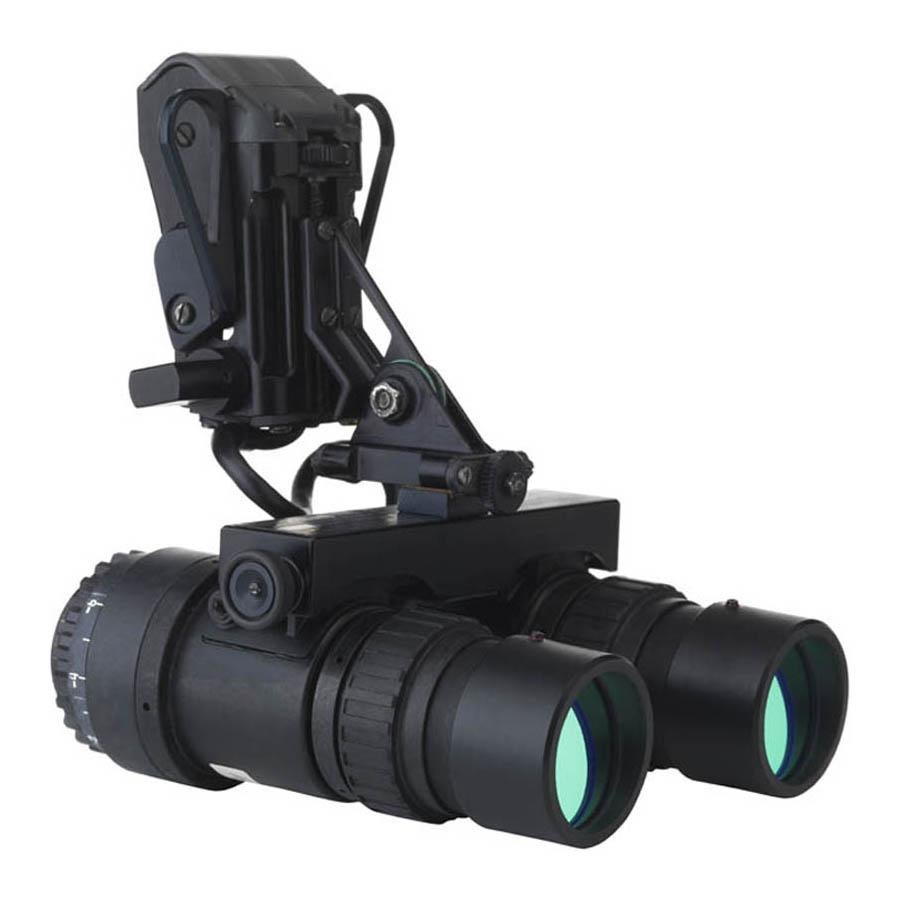
The 705 Auto-Separation NVG Mount is designed for fast jets. It is activated if an ejection sequence is initiated, disengaging the Night Vision Goggle mount from helmet mounting plate in 15 milliseconds. A gas motor within the 705 mount fires as the ejector sequence starts. The NVG assembly is physically separated from the helmet in just 20 milliseconds and will begin its trajectory as the pilot ejects.
NODS were yeeted.
Upgrading Fenn NVGs

My friend Cajer only cared about the optics and not the housing so I traded him a new ARGUS BNVD-931 housing for the FENN housing. The 931 housing is an updated 1431 housing. It has an IR illuminator built-in. This one is a pre-production sample so the IR illuminator element is visible. They have since used an IR filtered lens to cover up the LED. Also, the monocular pods are designed for use with ANVIS objectives.
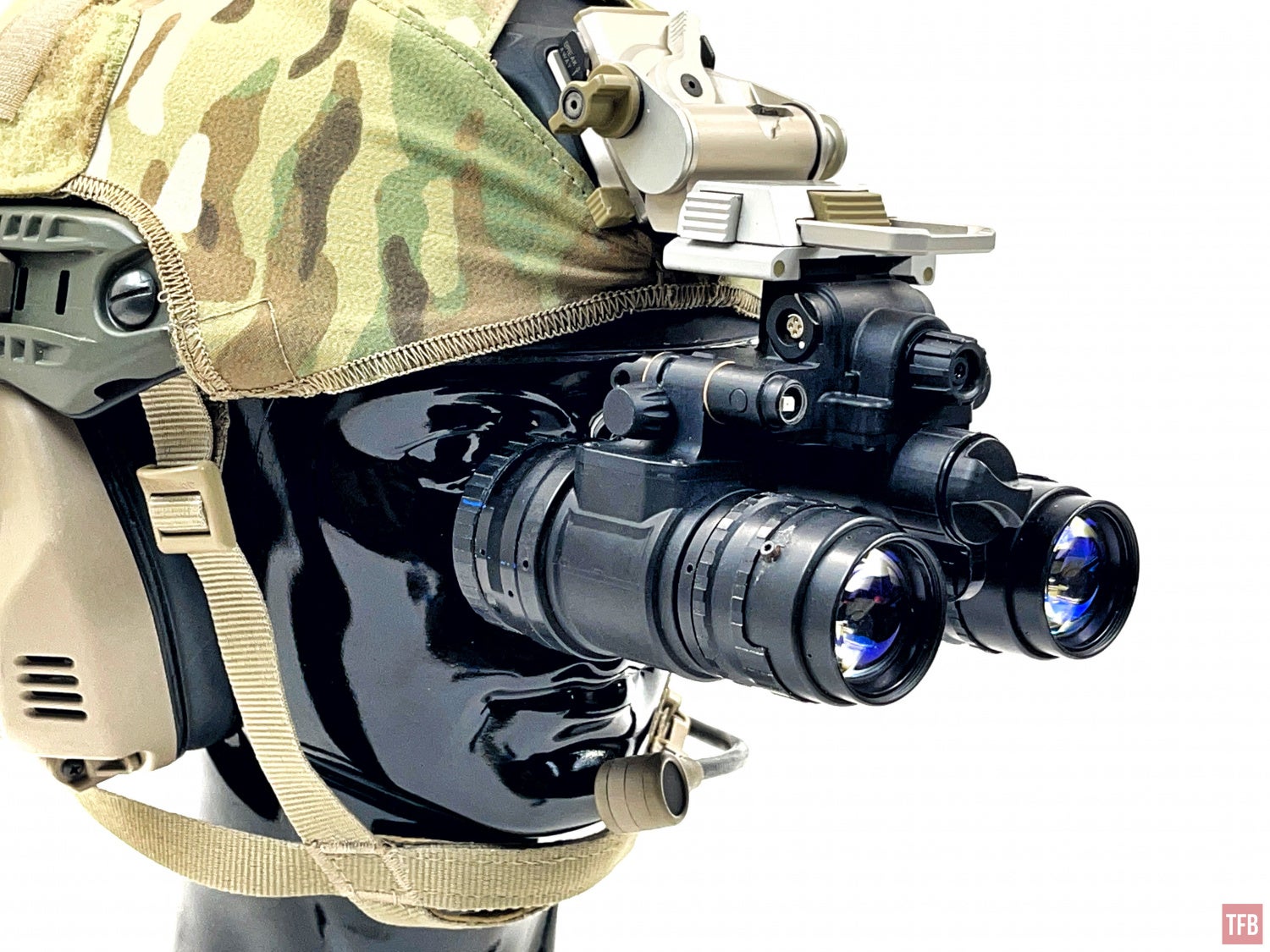


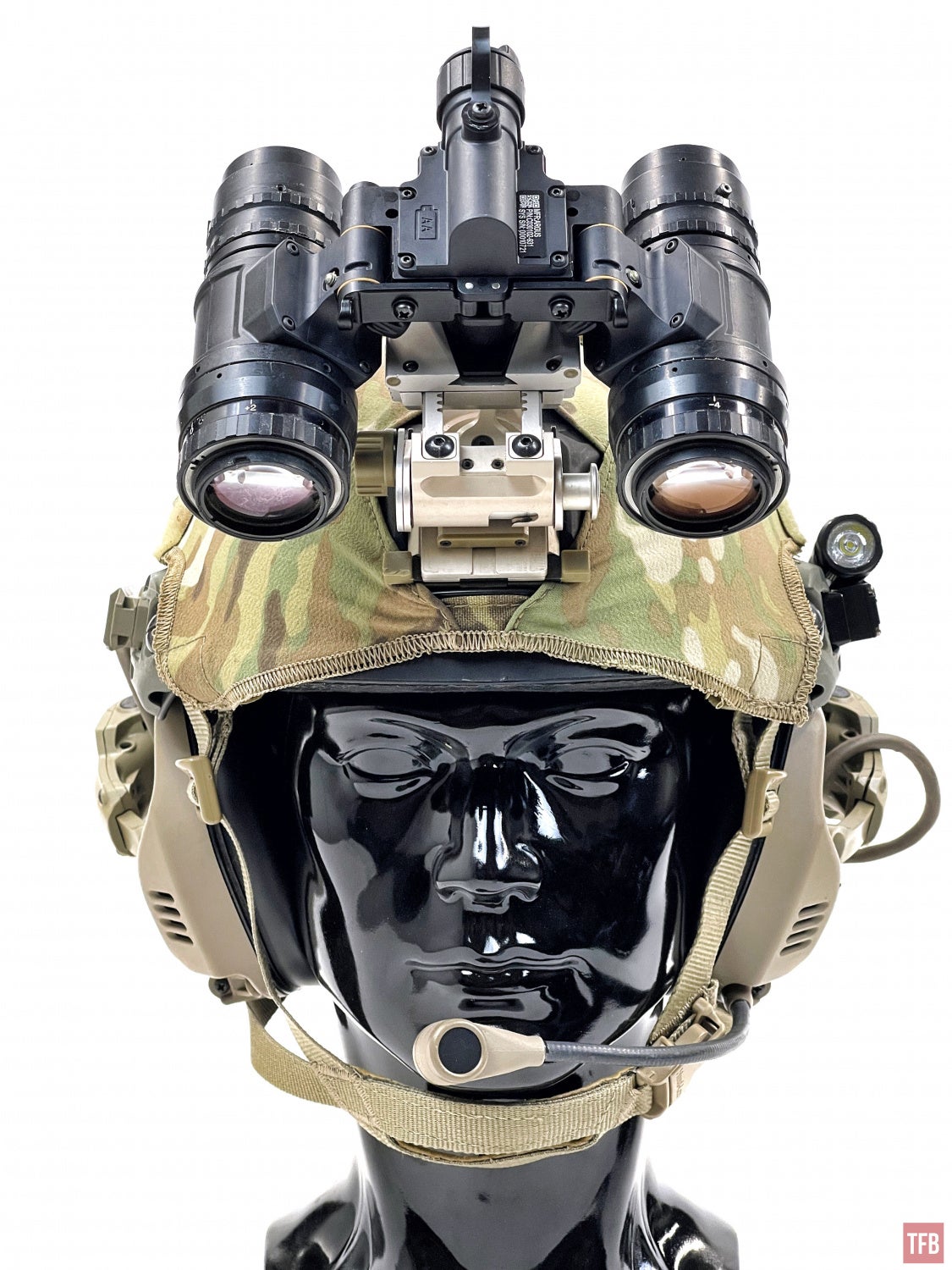

Here are the same lenses on an AB Night Vision monocular housing that uses ANVIS style glass.


Final Thoughts On the Fenn Night Vision Goggles
On paper, the Fenn optics makes sense. However, the fact that they are coated for aviation needs means there is not as much light entering into them as there could be if they were unfiltered. The wider field of view is nice but I feel it is not that significant to 40º. The problem is that these are one of the few sets of Fenn lenses in private citizen hands. I only know of a couple others that I can count on one hand that have or had such lenses. The cost of these lenses is very high as well. They dwarf the cost of DEP Ether glass and one set is easily the cost of a used PVS-14 or PVS-7. The auto ejecting mount is neat but I am not sure how it functions. There is very little information on it. According to the brief information on Fenn’s website electricity from the ejector start assembly and routed to the mount. Then it activates gas motors. I am not sure what the means specifically but it sounds interesting and yet overly complicated. In the end, it is just another set of ANVIS goggles and while they are interesting, they are not that practical for ground use.
TFB’s Friday Night Lights series is brought to you by ATN
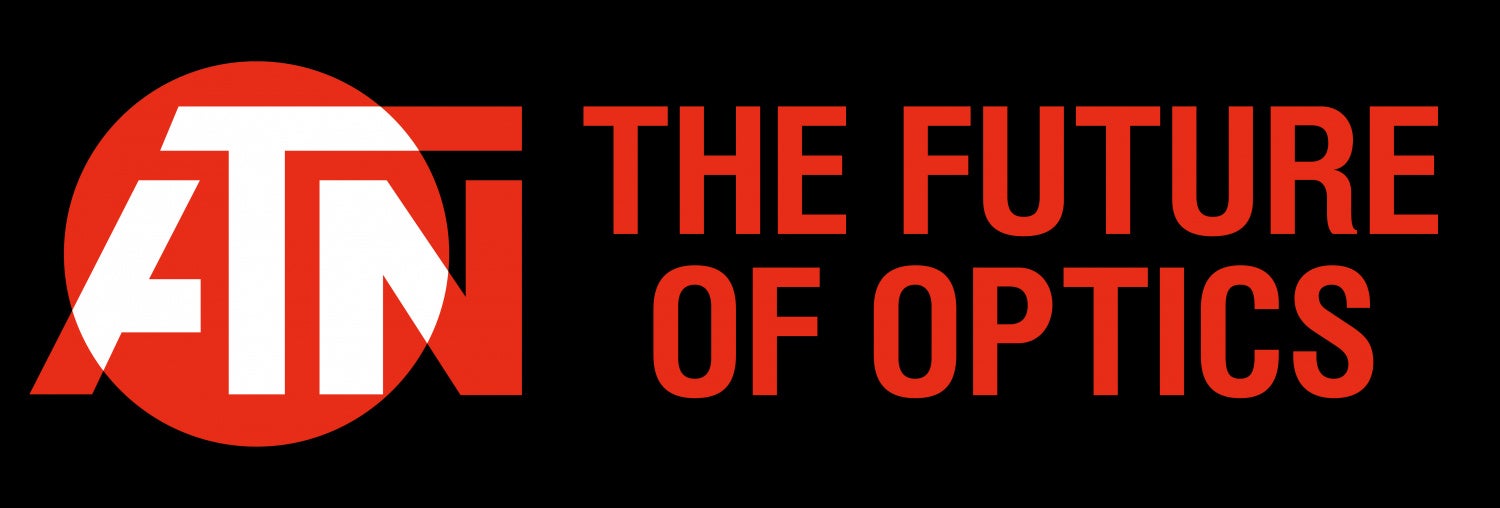
 Your Privacy Choices
Your Privacy Choices
